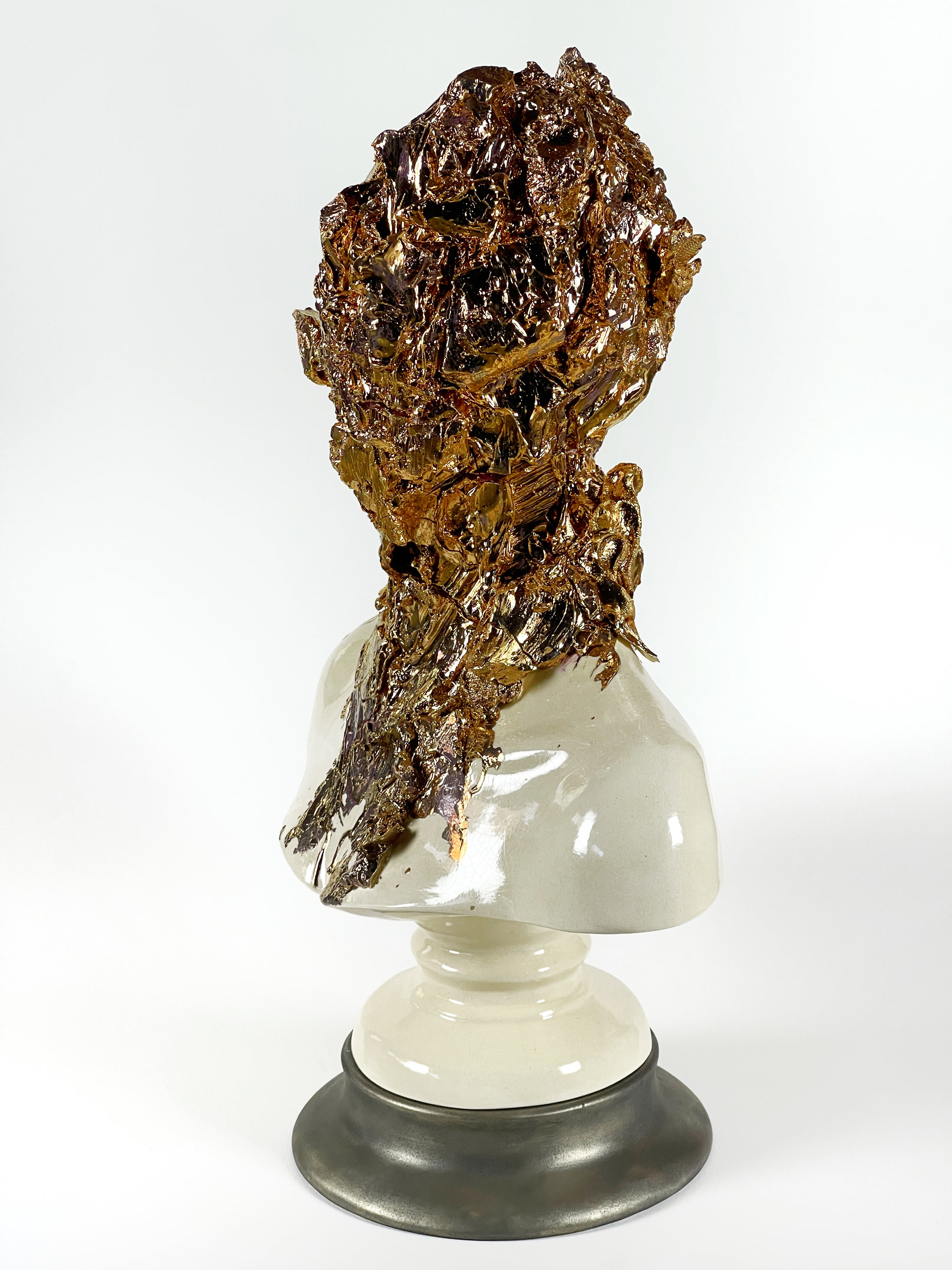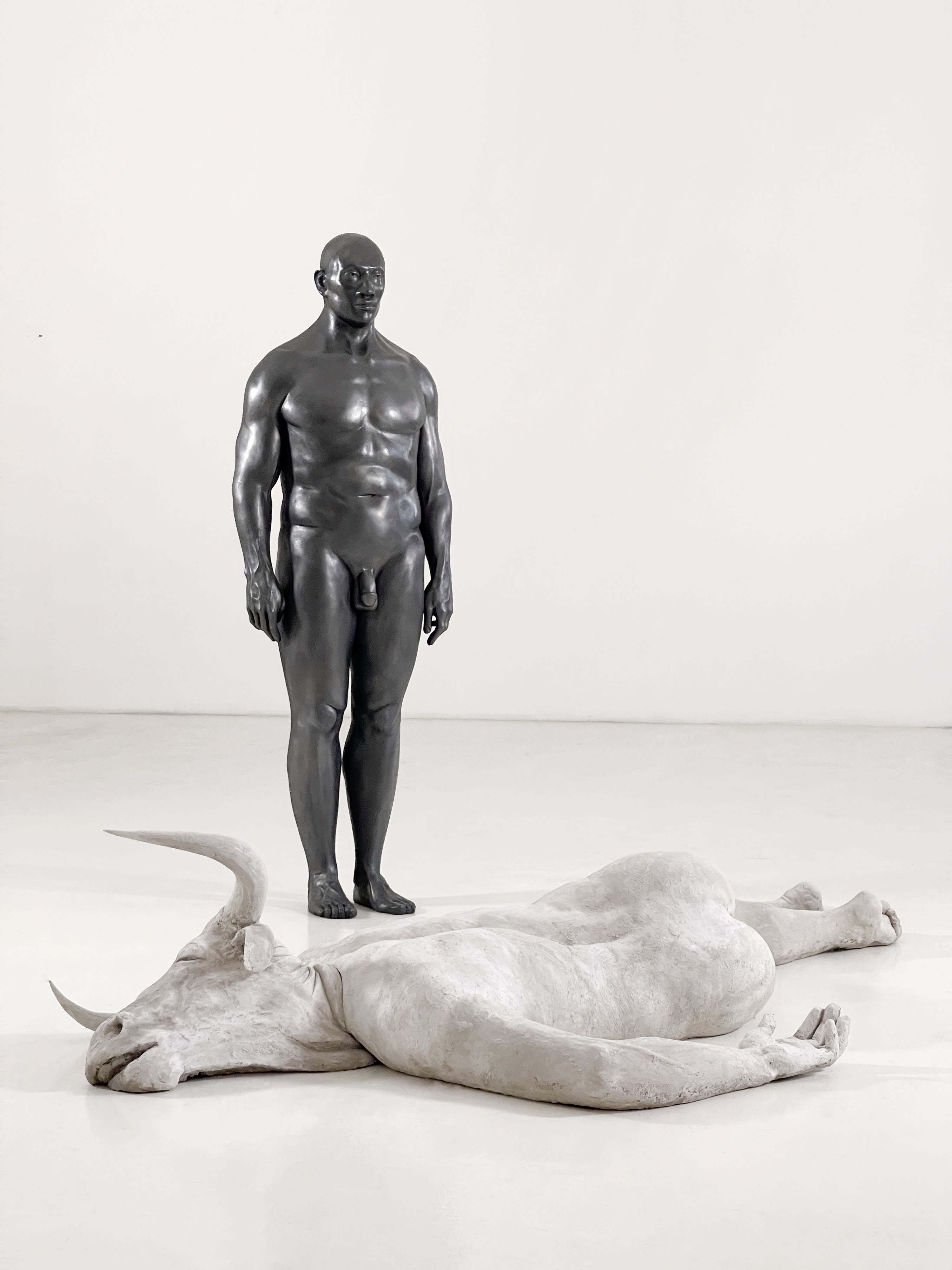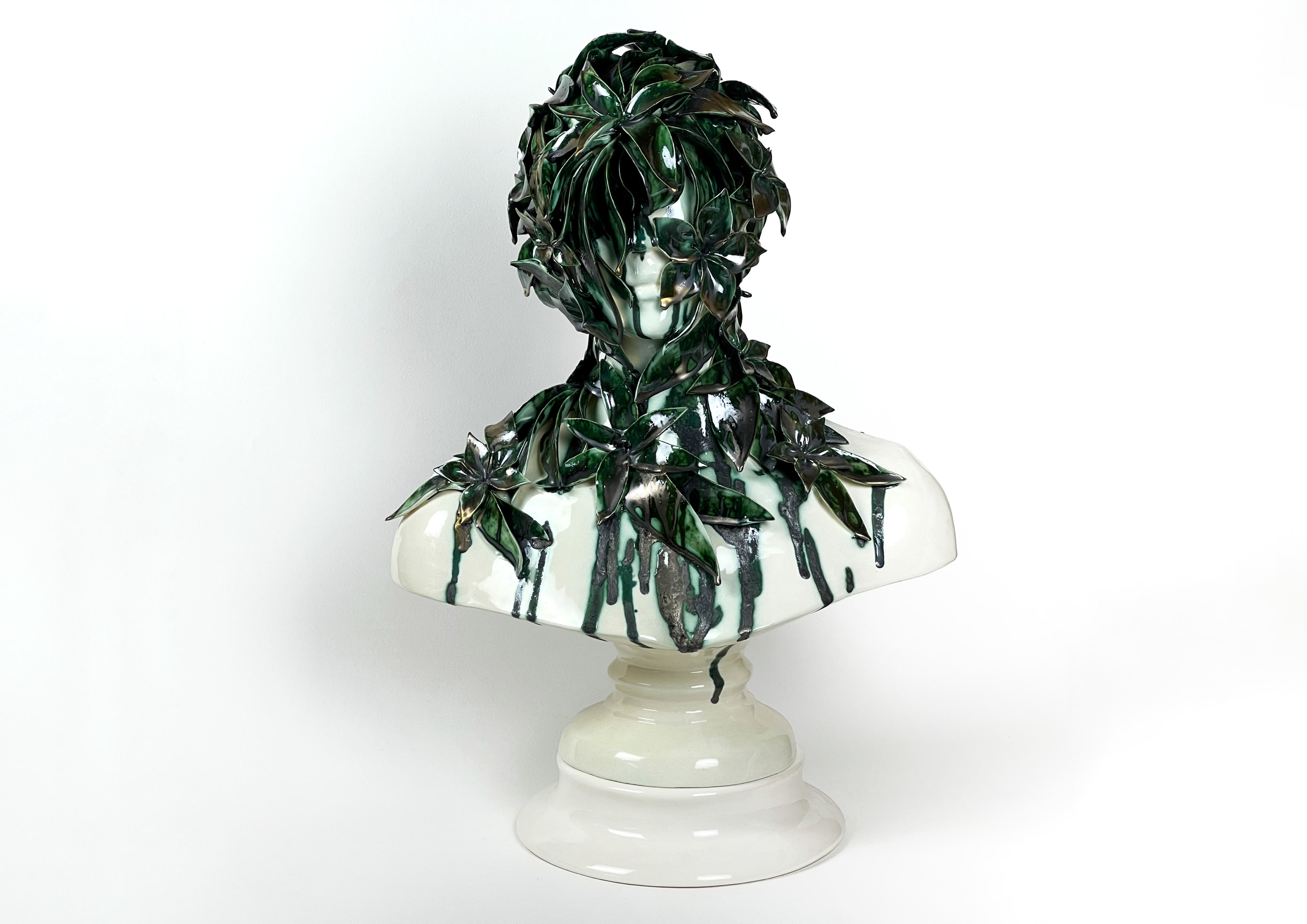Cleared of visitors, the small space at Ethan Cohen gave me the strangest of sensations. I felt that I had been transported into the Greek and Roman wing of the Metropolitan but that it had become a dream version of itself, in which the anxieties and apparitions of the classical world had reappeared in a contemporary guise. Something was being deeply channeled through Emil Alzamora’s exhibition, and it was not simply a matter of the references these superb sculptures made to embalmed traditions.
The place to start is with the obvious tour de force of the show, a larger than life-sized figure titled Minotaur (2005), made of gray gypsum, resembling concrete, splayed on the floor. The word “felled” came to mind and conjured the ancient story. The half-bull, half-human product of Zeus’s miscegenation reigned in labyrinthine confinement until its slaughter by Theseus, guided by Ariadne’s thread. Daedalus forged this prison labyrinth, likewise the wings that led to the death of his son Icarus. In the ancient stories, it seems, every act of heroism, pride, desire, imagination, love, and survival leads to its opposite—to overthrow, vengeance, punishment, and death. Every rock signals nothing but a hard place, and there is no point in complaining about it. Yet the poignancy of the tragic mode is that it must be lived by every human being, subject to the whims of fate and the arbitrary actions of the gods, whether they believe or not. Dead the monster that was also the victim. Dead, too, a time when humans felt themselves uncomfortably close to divinity and near to nature.

Emil Alzamora, Goldface 4, 2024. Ceramic, bronze glaze, epoxy: 26 1/4 x 17 1/2 x 10 in. © Emil Alzamora. Courtesy Ethan Cohen Gallery.
The allegorical insinuations multiplied in the figure of an impassive black character that stood over the creature on the floor. Titled Ethesus (2024)—an anagram of Theseus—and fashioned almost twenty years after the Minotaur out of cast cement, the sculpture was not intended to be part of the same story, but introduced here, the hulking giant appeared to preside, with indifference, over the death of a tradition and at the same time embody a different form of divinity, a new/old icon.
I wondered what kind of world I had entered, and across the room, a series of busts on plinths gave me a set of possible understandings, or perhaps more mysteries. Each of the busts depicted what could be seen as different circumstances of the human. A trip to the Met reminds us that such sculptures in the Roman past, for all their realism, were meant to be ceremonial, symbolic, and aggrandizing. Alzamora’s “sweet company” was anything but. Several of the busts were titled Apopheniac. “Apophenia,” the root, is the tendency to perceive meaningful connections between unrelated things, and these pieces stretched the definition to a surreal limit. Apopheniac No. 17 (2024) swathed the entire head and face in what appeared to be beautiful green seaweed, like a ceremonial garland gone wild. Apopheniac No. 14 (2023) reprised the theme but with delicate pink and white flowers replacing the dark green. These were wondrous to look upon, and so were two companion busts titled Goldface 3 and 4 (both 2024), in which the head and shoulders were covered with what appeared to be molten gold.


Emil Alzamora, Apopheniac No. 17, 2024. Ceramic, gold overglaze: 25 1/2 x 17 1/2 x 10 in. © Emil Alzamora. Courtesy Ethan Cohen Gallery.
Even at a small scale, as in a museum of antiquities, there were the household gods and the votive sculptures, small pieces for the table or the tomb. Close to a dozen of these, many in bronze and each carrying symbolic overtones, displayed a sculptor’s bravado. My favorite was a pair of figures titled Brothers (2004), capturing the closeness and ambivalence of two men who enact a ceremony of approach and avoidance.
But to get back to those busts, and re-enter our imaginary main hall: for me the profoundly elegiac feeling of the show came from recognizing in the skill and beauty of its presentation a swan song for Western empire, and an embrace of the transformations that will inevitably happen. Whether we want to or not, we will become closer to nature, humbled by it, and Emil Alzamora will tell new stories about it.


